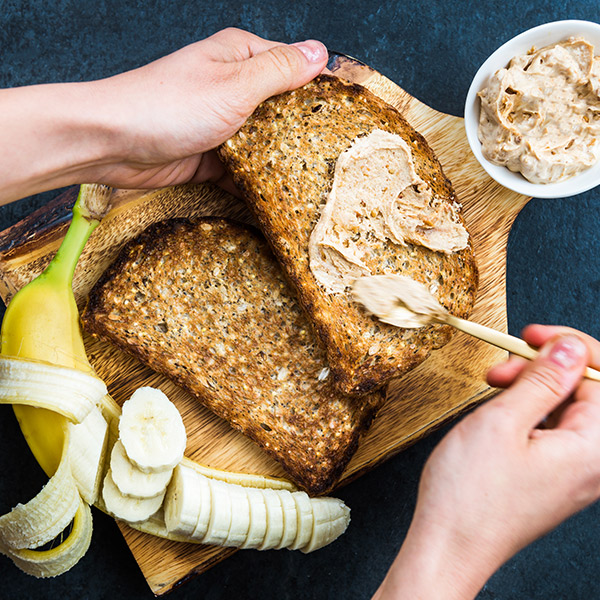




Without a doubt, one of the key things you're probably working on right now is reducing the carb intake in your diet plan.
Especially if you're a diabetic, carbohydrates are top on the list of things you need to try to cut back on in your diet plan in order to maintain proper blood glucose control. After carbs, excess calories are the main concern. But as it stands, carbohydrates are the main focus.
This isn't to say you need to cut out all the carbs in your diet plan. It's perfectly acceptable to have some carbs present throughout the day to provide energy and nutrition, but you do need to choose wisely.
If you're currently eating a diet that's 50-60% carbohydrates like the average individual in our society, you'll definitely need to cut back. A good diabetic diet should come in at around 25-30% total protein content, 30-35% total carbohydrate content, and 35-45% total fat content. If you're active on a regular basis, switch the percentages of fat and carb content around so you have a few more carbohydrates for energy purposes.
Once you have this figured out, now it's time to think about where you can reduce your calorie intake. Here are a few ideas.
If you're in the habit of taking a sandwich with you to work, there's no question this is going to bump up your carbohydrate intake. The average slice of bread contains 18-25 grams of carbs – some even more if it's a heartier bread – so the entire meal will be in the neighborhood of a total of 50 grams of carbs.
Instead of choosing bread for your sandwich, why not opt for a pita instead? If you choose a smaller-size pita, you'll likely only take in 25-30 grams of carbs total. And what's more is that you can stuff that pita full of fresh vegetables to help boost your fiber intake.
While you want to cut back on the total number of carbs you eat in your diet plan, you'll typically want to increase the total amount of fiber. This helps you do just that.
Another smart way to reduce your carbohydrate intake is to choose oatmeal instead of cold cereal for breakfast in the morning. While raw oatmeal is very calorie-dense, when it's cooked it takes up far more volume and this is going to fill you up quickly, meaning you'll take in fewer calories overall.
Per cup of cold cereal, you can easily consume 40-60 grams of carbs, whereas for a cup of cooked oatmeal, you'll be looking at about 25-30 grams.
Oatmeal, if you choose the plain, unsweetened version, also contains fewer grams of sugar and more fiber than most cold cereals, so that's another benefit as well.
When it comes to carbs at bedtime, eat them in moderation. You don't want too many carbs because this can cause an increase in blood glucose levels, which will then create a crash later on and could wake you up at night.
At the same time, some carbs can be beneficial because carbohydrates do cause the release of serotonin in the bloodstream, which can make you feel sleepy and make it easier to get to sleep.
So, balance is key. Consuming 20-30 grams of carbs should be okay at this meal, but avoid going over that. And make sure that you work those carbs into your target daily allotment.
One thing that many people don't realize in their quest for better health and lower carb intake is that milk is loaded with sugar. Your parents may have instructed you to 'drink your milk' because they were concerned about you getting enough bone-boosting calcium. Milk is, after all, healthier than soda. The problem is that you'll get almost 10 grams of milk sugar per cup. Drink a few cups per day and this is way over the limit for most diabetics to consume.
The swap here is simple though. Just choose almond milk, cashew milk or coconut milk over cow's milk. There will be a slight taste difference, but for most people, it's not enough to put them off making the switch if it's better for their health (which it is).
Finally, while not a swap per se, the last thing you can do to help take in fewer carbs with your diet plan is to fill up on vegetables before you eat any complex carbs you have on your plate. The reason for this is that by the time you're finished eating those vegetables, you might just find that you hardly want those carbs anymore – or you may want less of them because your hunger void has been filled.
Vegetables contain so few grams of carbs, especially after accounting for the fiber, that the more of them you have in your diet plan, the better. They're also far more nutrient-dense than most foods, so again, it's a winning situation for you.
So, keep these points in mind and remember that you don't have to do a comprehensive diet overhaul in order to see results. You just need to look for little places you can cut back on your carb intake, and that should be enough to make a difference and help you start seeing the results you desire.

Daily Affirmation: I am strong, motivated, and determined.
When I set goals, I am confident I can reach them.